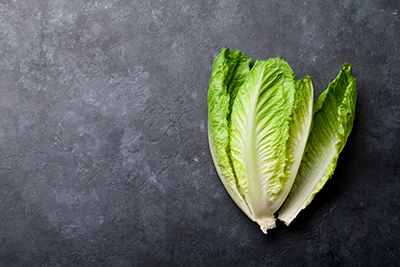Contents
The Ancient Romans were fully aware of the many health benefits of lettuce; they ate it at night as a sleep remedy after overindulging at supper. The stressed citizens of modern cities can reap the benefits of lettuce in the same way, but in place of a big dinner and not after.
Lettuce as a main dish for supper is perfect for those needing its sedative effect or those seeking weight loss. In this way, its mild sedative effect and ability to satisfy the appetite are maximized. Naturally, those under the stress of a weight-loss program must retire early to be asleep when the sense of satiety has passed in two or three hours.

Lettuce Scientific Facts
- Scientific Name – Lactuca sativa L.
- Scientific Synonym – Lactuca virosa L.
- Other Names – Celtuce, Cos, Garden lettuce, [Green] romaine lettuce.
- French – Laitue
- Spanish – Lechuga.
- German – Kopfsalat.
- Description—The leaves of lettuce, which belong to the botanical family Compositae, are green to purple-red. Some varieties have straight leaves, and others have curly ones.
- Environment – Originally from Asia Minor, its cultivation extended in antiquity throughout the Roman Empire. It is grown in the open air in temperate areas worldwide and in greenhouses.
Health Benefits of Lettuce

Lettuce is one of the most decadent foods in water (94.9 percent). However, the comparatively prominent level of proteins (1.62 percent) that it provides is impressive. This is only less than the potato (2.07 percent). These are inadequate proteins since the essential amino acid methionine is insufficient. However, by combining lettuce with a plate of legumes (preferably at the same meal), a supplementation occurs between the proteins of both foods. The body obtains all the amino acids needed in the proper proportion.
Lettuce is a lousy source of carbohydrates (0.67 percent) and fat (0.2 percent), which explains its low energetic contribution. The excellent health benefits of lettuce are based on the following components:
- Provitamin A – one hundred grams of lettuce provides 260 ug RE (micrograms of retinol equivalent), representing a quarter of this provitamin’s daily requirement. The white leaves in the center hold much less provitamin A in the form of beta-carotene.
- B group vitamins – Lettuce is exceptionally rich in vitamins B1 and B2 and folates.
- Vitamin C – The concentration of this vitamin in lettuce is 24 mg/100 grams, which is a little less than half that of an orange or lemon.
- Minerals—Lettuce is noted for its potassium and iron content. It also contains significant amounts of calcium, phosphorous, and magnesium and the trace elements zinc, copper, and manganese. These minerals form alkalizing salts, making lettuce a good antacid in the stomach and the blood.
- Vegetable fiber – Contributes to a mild laxative effect.
- Sedative and sleep-inducing substances – The same as found in the latex of wild lettuce, but a much lower proportion. These elements are chemically like opium but lack toxicity and addictive properties.
Because of these compositions, the health benefits of lettuce have the following properties: sleep-inducing, alkalizer, remineralizer, aperitif, and sedative. It is beneficial for the following conditions:

Functional conditions of the nervous system, like anxiety, psychological tension, stress, or nervousness. Eating lettuce regularly produces a mild and imperceptible sedative effect while providing all-important B vitamins for the nervous system’s stability.
Insomnia – A substantial supper consisting of only lettuce is recommended for those who cannot sleep.
Digestive issues – When consumed before meals, lettuce helps facilitate digestion and tones the stomach.
Constipation – The health benefits of lettuce aid intestinal function thanks to its fantastic, easy-to-digest fiber content.
Obesity—Lettuce provides a profound sense of being full after eating it but few calories. At the same time, it relieves anxiety and nervousness regarding the foods that usually accompany obesity. A substantial plate of lettuce significantly reduces appetite and provides adequate minerals and vitamins.
Diabetes – Lettuce is extremely low in carbohydrates; therefore, diabetics can enjoy it but not overindulge. Moderation is the key to everything.
How to use Lettuce
- Raw—This is how to take advantage of the many health benefits of lettuce and enjoy its pleasant taste and freshness. You can dress it with a bit of oil (olive oil, preferably) and a few drops of lemon juice. Remember, green leaves are far more nutritious than white ones.
- Cooked – You can cook the most rigid leaves like green leafy vegetables.
DISCLAIMER: All content on this website is presented solely for educational and informational objectives. Do not rely on the information provided as a replacement for advice, diagnosis, or treatment from a qualified medical expert. If you are pregnant, nursing, or have any preexisting medical concerns, talk to your doctor before using any herbal or natural medicines.
REFERENCES
- George D. Pamplona-Roger, M.D. “Encyclopedia of Foods and Their Healing Power.” George D. Pamplona-Roger, M.D. Encyclopedia of Foods, and Their Healing Power. Trans. Annette Melgosa. Vol. 2. Chai Wan: Editorial Safeliz, 2005. 45, 46. Print. [health benefits of lettuce]
- WebMD: https://www.webmd.com/diet/health-benefits-lettuce
- Cleveland Clinic: https://health.clevelandclinic.org/benefits-of-lettuce
- Health.com: https://www.health.com/benefits-of-lettuce-8604815
- LettuceInfo.org: https://lettuceinfo.org/lettuce-nutrition/
Last update on 2025-06-04 / Affiliate links / Images from Amazon Product Advertising API





